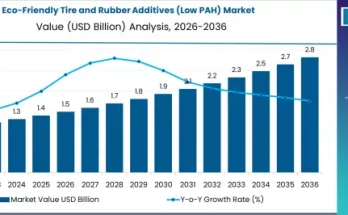According to industry analysis by Fact.MR, a market research and competitive intelligence provider, the LiDAR sensor market is projected to grow at a robust CAGR of 12.7% during the forecast period. This growth is driven by several key factors, including advancements in autonomous vehicles, connected cars, and innovations in vehicle automation and transportation planning.
Key Drivers of Growth:
Autonomous Vehicles and Connected Cars: The demand for LiDAR sensors is set to rise significantly as autonomous vehicles and connected cars become more prevalent. These sensors are crucial for helping vehicles identify obstacles, ensuring safer and more efficient navigation. As the automotive industry continues to innovate, the integration of LiDAR technology will play a pivotal role in transforming transportation.
Meteorology: The integration of LiDAR sensors in meteorology has made it the largest contributor to the market share of LiDAR sensors. These sensors provide valuable data to meteorological departments, helping them understand weather conditions better. By collecting and analyzing atmospheric data, LiDAR sensors enhance weather forecasting and climate research.
Technological Advancements: Over time, LiDAR sensor technology has become more economical and advanced. Continuous technological innovations have led to the development of more affordable and sophisticated sensors. Recently, the use of LiDAR to create 3D and 4D images of the surrounding environment has become a significant driving factor for its adoption across various industries.
Market Insights:
- The global LiDAR sensor market is projected to expand at an impressive CAGR of 7%, reaching a value of US$ 6,328.7 Mn by 2032.
- The market witnessed a 3% CAGR from 2017 to 2021.
- Solid State LiDAR Sensors dominate the market, estimated to be valued at US$ 1,414.9 million in 2022.
- East Asia held a 9% market share in 2022.
- Vehicle automation applications are expected to represent a 9% market share in 2022.
- Demand for LiDAR sensors is expected to grow at a CAGR of 3% in Europe and 10.9% in MEA during the forecast period.
Market Development:
The global LiDAR sensor market is highly competitive, with numerous players striving to innovate and capture market share. LiDAR technology has found applications in various fields, including augmented reality (AR), atmospheric research, and engineering and construction.
Augmented Reality: LiDAR technology enhances AR experiences by providing detailed 3D mapping. This enables other systems to integrate LiDAR data with their own, creating more immersive and interactive AR applications. The ability to map environments in real-time has opened new possibilities for AR developers and users.
Atmospheric Research: Scientists are using LiDAR sensors to gain deeper insights into the atmosphere. These sensors provide valuable information about vegetation cycles, helping researchers monitor environmental changes. When data indicates vegetation destruction, new policies can be implemented to protect and restore affected areas.
Engineering and Construction: In the field of engineering and construction, LiDAR sensors are used to create detailed spatial maps before designing structures. This helps reduce errors and saves costs by providing accurate data for planning and execution. The ability to visualize and analyze construction sites in 3D has revolutionized project management and execution.
Challenges Faced by the Market:
- High Costs: Despite advancements, LiDAR sensors remain relatively expensive, which can be a barrier for widespread adoption, especially for smaller companies or emerging markets.
- Technical Limitations: LiDAR technology can be affected by environmental conditions such as rain, fog, and snow, which can impact the accuracy and reliability of the data collected.
- Regulatory Hurdles: The integration of LiDAR sensors in autonomous vehicles and other applications is subject to stringent regulatory standards, which can slow down the deployment and commercialization of new technologies.
- Competition from Alternative Technologies: Other sensing technologies, such as radar and camera-based systems, are also evolving and can serve as alternatives to LiDAR, posing a competitive challenge.
- Data Processing and Management: The vast amount of data generated by LiDAR sensors requires advanced processing and storage solutions, which can be complex and costly to implement.
Future Outlook:
The future of the LiDAR sensor market looks promising, with continued advancements and increasing adoption across various industries. As technology evolves, LiDAR sensors are expected to become even more integral to applications in autonomous driving, smart cities, environmental monitoring, and beyond.
Conclusion:
The LiDAR sensor market is on a trajectory of significant growth, driven by advancements in autonomous vehicles, connected cars, and meteorology. With continuous technological innovations making LiDAR sensors more economical and advanced, their adoption is set to increase across various sectors. However, the market also faces challenges such as high costs, technical limitations, and regulatory hurdles. As the market expands, LiDAR technology will continue to play a crucial role in enhancing safety, efficiency, and environmental understanding.


